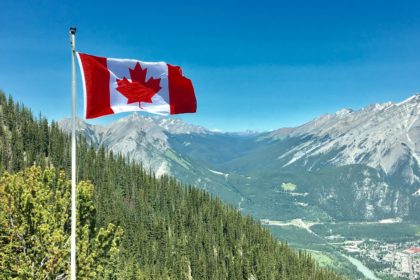
I have been asked by many kababayans about Flagpoling and if it’s the best option to apply for a work permit. First, let us find out who is eligible to apply for a work permit at the Port of Entry. IRCC has provided this update recently.
WHO CAN APPLY AT THE PORT OF ENTRY?
Some workers can apply at the time of their entry to Canada. When seeking to enter Canada, some foreign nationals may make an application for their work permit at the port of entry per subsection R198(1) if they
- are exempt from the requirement for a temporary resident visa (TRV) under section R190 and their job falls within the International Mobility Program (IMP) (that is, they are not required to obtain a labour market impact assessment [LMIA])
- are exempt from the requirement for a TRV under section R190 and their job falls within the Temporary Foreign Worker Program (TFWP) (that is, they are required to obtain an LMIA), and a positive or neutral LMIA has been issued by the time they arrive
- are a national or permanent resident of the United States (U.S.), Greenland or Saint-Pierre and Miquelon, regardless of whether their job falls within the TFWP or the IMP
- are not seeking a work permit in a category not permitted to apply at a port of entry (for example, as a live-in caregiver or as a seasonal agricultural worker)
- are seeking entry into Canada and meet the requirements of sections R198 and R200
The following persons cannot apply on entry to Canada [R198(2)]:
- all persons who require a TRV
- all persons who require an IME, whether TRV-required or visa-exempt, unless valid IME results are available at the time of entry
- international youth exchange program participants other than U.S. citizens or permanent residents (exemption code C21) (consult International Experience Canada)
- seasonal agricultural workers
- foreign nationals from electronic travel authorization (eTA) expansion countries, as they are not TRV-exempt as per section R190
Persons who hold a valid work permit or who wish to change their conditions or renew their work permit should apply in Canada, pursuant to section R199.
Source of above information: IRCC’s Operational Instructions and Guidelines
So what is Flagpoling? According to Immigration Lawyer Mark Holthe in his presentation and I quote” :
When a foreign national leaves Canada by land, presents themselves to the US POQ and explains they are not seeking entry to the US, but applying for a work permit, study permit, etc. to Canada.
The US POE issues an administrative refusal and directs the person back to Canada where they apply for their immigration document at the Canadian POE.
What type of applications cannot be processed by flagpoling at the POE?
- Bridging Open Work Permits
- Study Permits and Extensions (for anyone other than US citizens, US PR’s, residents of Greenland, St. Pierre or Miquelon) R214
- Seasonal Agricultural Work Permits
- International Experience Canada ( except for US citizens)
- Special measures work permits ( for example Iran, etc.)
- The list is being updated regularly so before you go always double check to ensure that you are eligible for flagpoling
What type of applications CAN BE processed at the POE?
- All other work permits under TFWP or IMP
- Study permits and extensions if eligible under R214
- Visitor Renewals
- COPR validation ( this is rare nowadays since the eCOPR has been put in place by IRCC)
What are the advantages of flagpoling?
- Faster processing -can get immediate decision
- Upon issuance of work permit may apply for the social insurance number, avail of medical coverage and apply or renew your driver’s license
- in some circumstances, may change employers quickly
What are the disadvantages of flagpoling?
- -Risk of Work permit refusal
- Does the foreign national meet the requirements of the LMIA (if LMIA is a requirement) R30
- Does the foreign national engaged in unauthorized study or work or failed to comply with a condition of previous permit?
- -Risk on finding of inadmissibility for non-compliance with the Act
- -Finding of misrepresentation
- -Risk of adverse US immigration consequences and complications now and in the future if applicant does not hold a valid US Visitor Visa
Please note that there is no right to counsel at primary examination as per
“….in an immigration examination for routine information-gathering purposes, the right to counsel does not extend beyond those circumstances of arrest or detention described in s. 10(b).” Dehghaniv. Canada (Minister of Employment and Immigration), [1993] 1 S.C.R. 1053
However, see ENF4, 8.4:
8.4 Right to counsel at POE examinations
For the purpose of an Immigration Secondary examination, a person is not entitled to counsel unless formally arrested or detained. A person who is arrested or detained must be informed without delay of their right to counsel and granted the opportunity to retain and instruct counsel.
The Supreme Court of Canada has held that an Immigration Secondary examination at a POE does not constitute a detention within the meaning of paragraph 10(b) of the Canadian Charter of Rights and Freedoms [Dehghaniv. Canada (Minister of Employment and Immigration), [1993] 1 S.C.R.
If you have questions regarding the above article, you may contact Marjorie at [email protected]
Source: Immigration, Refugees and Citizenship Canada (IRCC)
A word of caution: You should not act or rely on the information provided in this column. It is not a legal advice. To ensure your interests are protected, retain, or formally seek advice from a Regulated Canadian Immigration Consultant (RCIC) in good standing of CICC. The views expressed in this article do not necessarily reflect those of RCIC’s.



